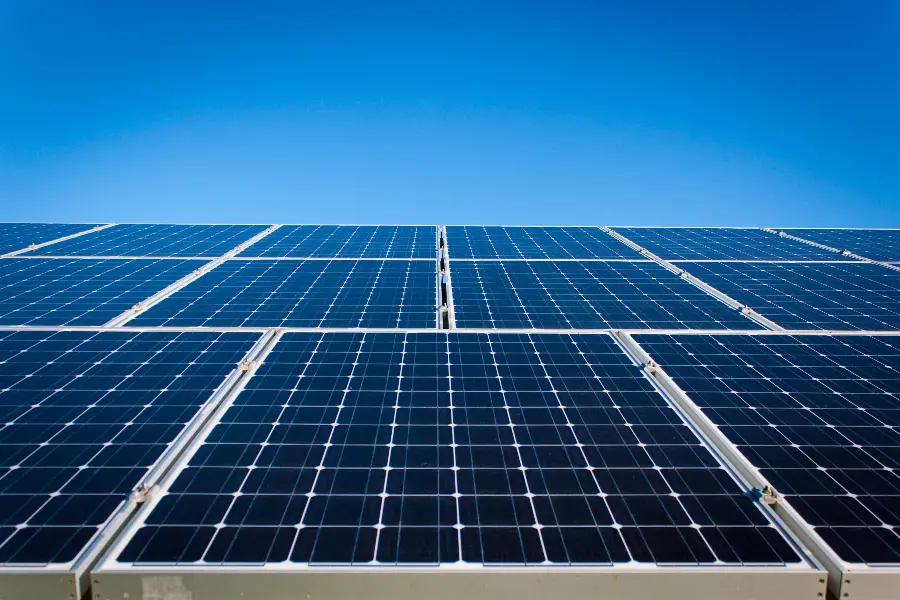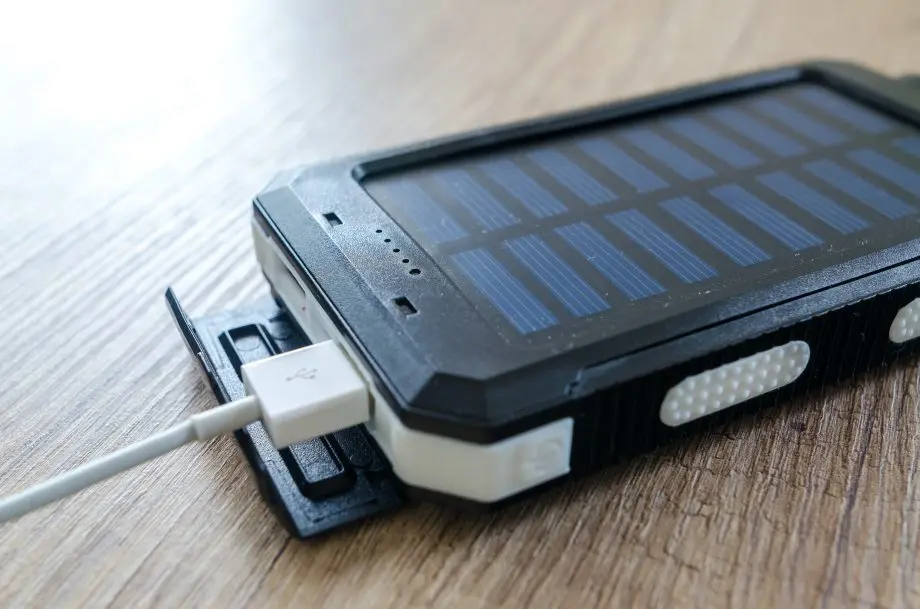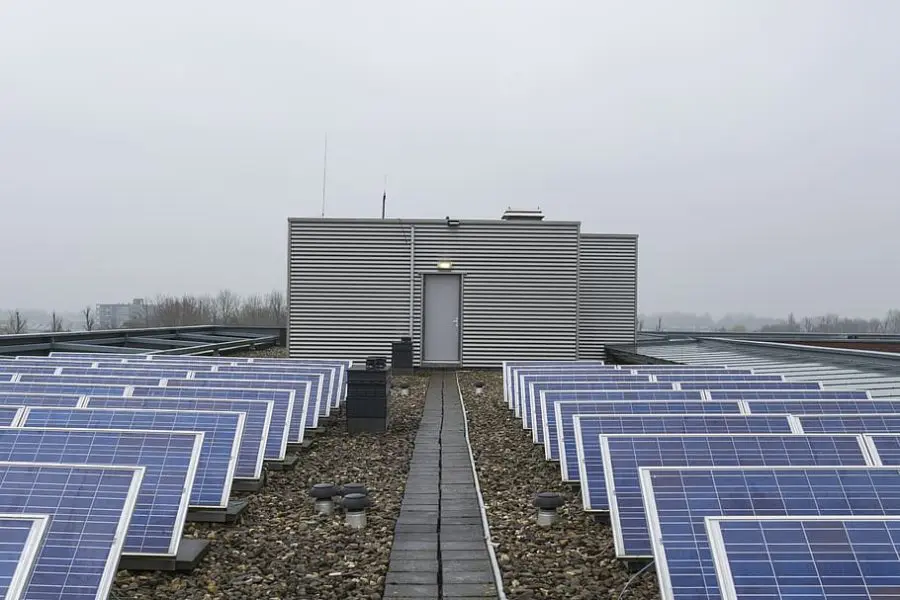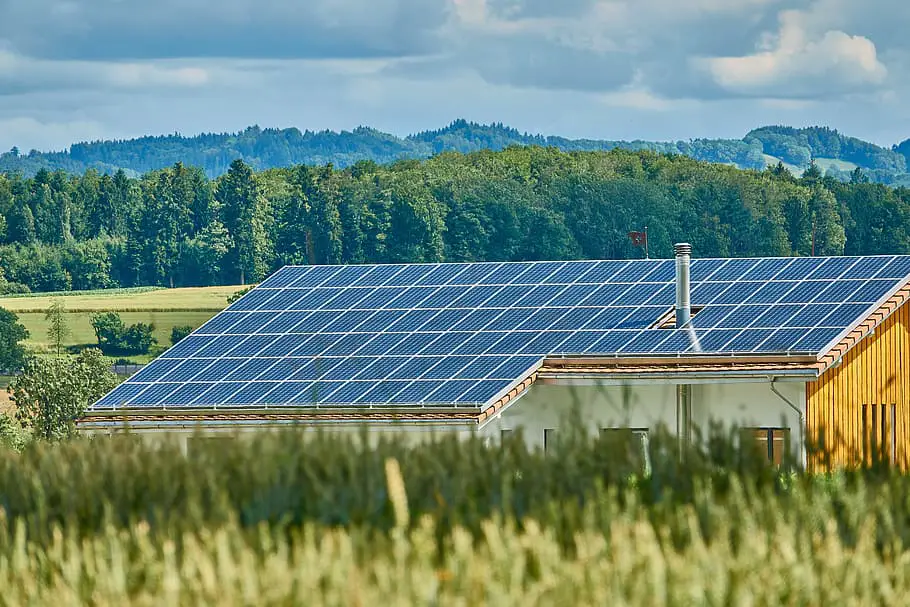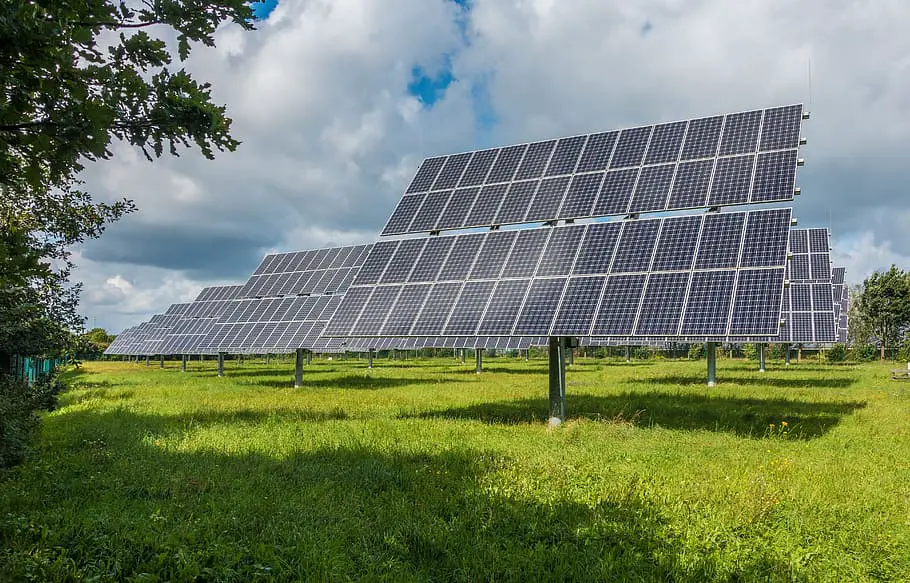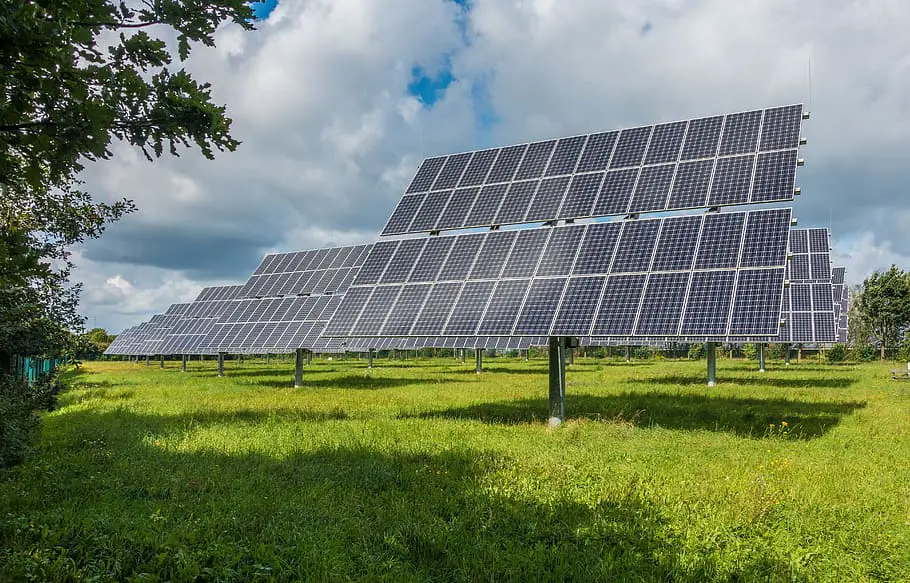
Explore the world of renewable energy with our guide on different types of solar power systems.
Learn how they work and the best fit for your needs.
Ever wondered about harnessing the sun’s power for your own use? Well, you’re in the right place!
Our guide on different types of solar power systems is here to shed light on this fascinating topic.
From grid-tied to off-grid and hybrid systems, we’ll dive into the details, helping you understand how each system works and which might be the best fit for your solar aspirations.
So, let’s embark on this illuminating journey together!
Different Types of Solar Power Systems
Welcome to our comprehensive guide on different types of solar power systems!
If you’ve ever considered tapping into the sun’s abundant energy, this post is for you.
We’ll be exploring the ins and outs of various solar power systems, from grid-tied to off-grid and hybrid systems.
We’ll also delve into the essential components that make these systems work and discuss how to choose the right system for your specific needs.
And, to top it all off, we’ll address some frequently asked questions to quench your curiosity.
So, buckle up and get ready for an enlightening ride into the world of solar power!
Brief Overview of Solar Power Systems
Solar power systems, in a nutshell, are a fantastic way to harness the sun’s energy to power our homes, businesses, and more.
These systems primarily consist of solar panels that capture sunlight and convert it into electricity.
But it’s not just about the panels! There’s a whole host of other components involved, like inverters, batteries, and charge controllers, each playing a crucial role in the process.
From providing electricity to remote locations to feeding power back into the grid, solar power systems are versatile and sustainable solutions in our quest for clean energy.
Importance of Understanding Different Types
Now, you might be wondering, Why do I need to understand the different types of solar power systems?
Well, just like choosing a new car or a home, the ‘one-size-fits-all’ approach doesn’t quite work here.
Each type of solar power system has its unique features, benefits, and potential drawbacks.
Understanding these differences is key to making an informed decision that best suits your needs and circumstances.
Whether it’s reducing your energy bills, becoming completely energy independent, or having a backup power source, the right solar power system can make all the difference.
So, let’s dive in and explore these systems in more detail!
Types of Solar Power Systems
Ready to dive deeper into the world of solar power? Great! In this section, we’ll explore the different types of solar power systems.
Just like ice cream, solar power systems come in different flavors, grid-tied, off-grid, and hybrid.
Each has its unique characteristics, advantages, and considerations.
Whether you’re looking to offset your energy bills, become entirely independent of the grid, or want a mix of both, there’s a solar power system designed to meet those needs.
So, let’s get started and uncover the specifics of these fascinating systems!
Grid-Tied Solar Systems
Let’s kick things off with Grid-Tied Solar Systems. These systems are like the friendly neighbors of the solar world, they love to share!
They’re directly connected to the public electricity grid and are designed to feed excess energy back into the system.
During the day, your solar panels might produce more electricity than you use.
Instead of wasting this energy, a grid-tied system sends it back to the grid, earning you credits on your electricity bill.
But what about at night or on cloudy days when your panels aren’t producing much electricity? No worries!
That’s when you can draw power from the grid, using the credits you’ve earned. It’s a bit like having a bank account for your electricity.
However, it’s not all sunshine and rainbows. The main drawback of a grid-tied system is that if there’s a power outage, your system will shut down too.
This is to ensure the safety of the workers fixing the grid.
Off-Grid Solar Systems
Next up, we have Off-Grid Solar Systems. These are the independent adventurers of the solar world.
As the name suggests, these systems are not connected to the electricity grid.
They’re designed to generate and store all the electricity you need within the system itself.
This makes them perfect for remote locations without grid access, or for those who simply want to be entirely energy independent.
Off-grid systems typically include solar panels, a battery bank for storage, and often a backup generator for those just-in-case moments.
The freedom and self-reliance offered by off-grid systems are fantastic, but they do come with a higher price tag due to the need for more equipment, particularly the battery bank.
Hybrid Solar Systems
Last but not least, let’s talk about Hybrid Solar Systems. These systems are a bit like having the best of both worlds.
They’re connected to the grid but also include a battery for energy storage.
This means you can feed excess power back into the grid, draw from the grid when needed, and have a backup power source for outages.
Hybrid systems offer great flexibility and security. However, like off-grid systems, the inclusion of a battery bank can make hybrid systems more expensive than their grid-tied counterparts.
But for many, the added peace of mind and flexibility are well worth the investment.
Components of Solar Power Systems
Now that we’ve explored the different types of solar power systems, let’s take a closer look at the stars of the show, the components that make these systems work.
Just like a well-rehearsed orchestra, each part of a solar power system plays a crucial role in creating the symphony of sustainable energy.
From the solar panels that capture the sun’s rays to the inverters, batteries, and more, each component has a unique part to play.
So, let’s lift the curtain and meet the key players in the world of solar power systems!
Solar Panels
First up, we have the solar panels, the stars of the show! These are the devices that capture the sun’s energy and convert it into electricity.
They’re made up of photovoltaic cells that generate an electric current when exposed to sunlight.
The more intense the sunlight, the more electricity they produce. But remember, even on cloudy days, solar panels can still generate power, just at a reduced rate.
Inverters
Next in line are the inverters. Think of them as the translators of the solar world.
Solar panels produce direct current (DC) electricity, but most of our homes and appliances use alternating current (AC).
That’s where inverters come in. They convert the DC electricity from the panels into AC electricity that we can use in our homes.
Mounting Equipment
Then we have the mounting equipment. These are the unsung heroes that hold your solar panels in place.
They need to be sturdy and correctly installed to ensure your panels are secure and positioned to capture the maximum amount of sunlight.
Batteries (for off-grid and hybrid systems)
For off-grid and hybrid systems, batteries are a crucial component.
They store the excess electricity produced by your solar panels for use when the panels aren’t producing electricity, like at night or during periods of low sunlight.
Charge Controllers (for off-grid and hybrid systems)
Last but not least, we have the charge controllers. These clever devices regulate the power going into the battery bank from the solar panels.
They prevent the batteries from overcharging, which can damage them and shorten their lifespan.
Choosing the Right Solar Power System
Choosing the right solar power system is a bit like choosing the right outfit. It needs to fit your needs and circumstances perfectly.
Factors to consider include your energy needs, your location, the size and orientation of your roof, and your budget.
It’s also essential to consider your long-term goals. Are you looking to reduce your energy bills, become completely energy independent, or have a backup power source?
Understanding your needs will help you choose the right system, whether it’s grid-tied, off-grid, or hybrid.
Factors to consider
Choosing a solar power system isn’t a decision to be taken lightly. It’s a significant investment that requires careful consideration.
But don’t worry, we’re here to guide you through the process. In this section, we’ll delve into the key factors you need to consider when choosing a solar power system.
From cost and location to energy needs and more, we’ll help you navigate these considerations so you can make an informed decision.
So, let’s dive in and explore these factors together!
Cost, Location, Energy Needs, etc.
Choosing the right solar power system is a bit like piecing together a puzzle.
Several factors come into play, and it’s essential to consider each one to find the best fit for you.
Cost: Solar power systems are a significant investment, so cost is often a primary consideration.
The price can vary widely depending on the type of system (grid-tied, off-grid, or hybrid), the size of the system, and the specific equipment used.
Remember, while the upfront cost might seem high, solar power systems can save you money in the long run through reduced energy bills or even earnings from feeding power back into the grid.
Location: Your geographical location plays a crucial role in determining the effectiveness of a solar power system.
Factors like the amount of sunlight your area receives, local weather conditions, and even local regulations can impact the type and size of the system you choose.
Energy Needs: How much electricity do you use? Understanding your energy consumption is key to determining the size of the solar power system you need.
If your goal is to offset a portion of your energy use, a smaller system might suffice.
But if you’re aiming for complete energy independence, you’ll likely need a larger system.
Space: The amount of space you have available for installing solar panels can also influence your decision.
Do you have a large roof or a spacious backyard? Or are you working with a smaller space?
The size and orientation of your available space will impact the size and layout of your solar power system.
Future Plans: Are you planning to stay in your current home for many years, or might you move in the near future?
If you’re planning to move soon, a grid-tied system might be more beneficial as it can increase your home’s resale value.
If you’re staying put, an off-grid or hybrid system could be a worthwhile investment.
Remember, every situation is unique, and what works best for one person might not work as well for another.
It’s essential to consider all these factors and consult with a solar power professional to make the best decision for your specific circumstances.
Different Types Of Solar Power Systems FAQs
As we journey through the world of solar power systems, it’s natural to have a few questions pop up.
That’s why we’ve dedicated this section to answering some of the most frequently asked questions about solar power systems.
From understanding the different types of systems to figuring out the most efficient solar panels, we’ve got you covered.
So, let’s dive into these questions and shed some light on the answers!
Q: What are the 3 categories of solar systems and how are they utilized?
A: Solar power systems generally fall into three categories: grid-tied, off-grid, and hybrid.
Each of these systems provides a unique approach to generating and storing power.
• Grid-tied systems are connected to the public electricity grid.
• Off-grid systems are entirely independent.
• Hybrid systems offer a blend of the two, being connected to the grid but also having a battery for power storage.
Q: What are the 4 main types of solar energy?
A: Solar energy can be harnessed in four primary ways:
Passive Solar Gain, Solar Thermal, Concentrated Solar Power, and Photovoltaic Solar.
• Passive Solar Gain refers to the natural heat from the sun that can be used to warm buildings.
• Solar Thermal technology uses the sun’s heat to generate thermal energy.
• Concentrated Solar Power systems generate solar power by using mirrors or lenses to concentrate a large area of sunlight onto a small area.
• Photovoltaic Solar is what we commonly think of when we talk about solar power.
It’s the method of generating electrical power by converting solar radiation into direct current electricity using semiconductors.
Q: What is the most efficient type of solar panel?
A: When it comes to efficiency and power output, Monocrystalline Solar Panels, often referred to as ‘mono panels’, take the crown.
They offer the highest efficiency rates and power output of all solar panel types.
While they do come with a higher price tag, their long-term benefits, such as higher energy yields and a smaller footprint due to their efficiency, make them a worthwhile investment.
This makes them an excellent choice for homes with limited roof space.
Different Types Of Solar Power Systems Conclusion
As we reach the end of our solar power journey, it’s time to reflect on what we’ve learned.
From understanding the different types of solar power systems to exploring their components and considering the key factors in choosing a system, we’ve covered a lot of ground.
But before we wrap up, let’s take a moment to recap and share some final thoughts on this enlightening topic.
So, let’s dive into our conclusion and bring our solar power exploration to a close!
Recap
We’ve embarked on quite the journey through the world of solar power systems.
We started with an overview of solar power systems and why understanding the different types is so crucial.
We then dove into the specifics of the three main types of solar power systems: grid-tied, off-grid, and hybrid.
Each has its unique features, advantages, and potential drawbacks.
We also explored the key components that make these systems work, from the solar panels and inverters to the mounting equipment, batteries, and charge controllers.
And we discussed the important factors to consider when choosing a solar power system, such as cost, location, energy needs, and future plans.
Finally, we addressed some frequently asked questions about solar power systems, helping to clear up any lingering confusion and provide a deeper understanding of this fascinating topic.
Final Thoughts
As we wrap up, it’s clear to see that solar power systems offer an exciting and sustainable solution for our energy needs.
Whether you’re looking to reduce your energy bills, become completely energy independent, or have a backup power source, there’s a solar power system designed to meet those needs.
Choosing the right system is a significant decision, but with the information we’ve covered, you’re well-equipped to make an informed choice.
Remember, every situation is unique, and what works best for one person might not work as well for another.
So, consider your specific circumstances, consult with a solar power professional if needed, and you’ll be on your way to harnessing the power of the sun!
Remember, the sun is a powerful resource, and with solar power systems, we can harness that power for a brighter, more sustainable future.
So here’s to the power of the sun, and here’s to a future powered by clean, renewable energy!


